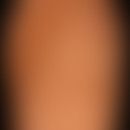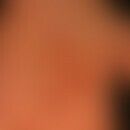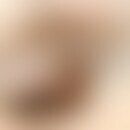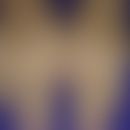DefinitionThis section has been translated automatically.
Pharmacodynamics (Effect)This section has been translated automatically.
You might also be interested in
IndicationThis section has been translated automatically.
IncompatibilityThis section has been translated automatically.
- Inhomogeneities can be caused by active ingredients such as aluminium chloride, ammonium bituminosulphonate, amphotericin B, bacitracin, benzalkonium chloride, benzyl alcohol, cetylpyridinium chloride, chloramine T, chlorphenoxamine HCl, chlortetracycline-HCl, dimetinden maleate, diphenhydramine HCl, dithranol, eucalyptol, potassium iodide, Liq. alum. acet.., Liq. carb. detergent, menthol, lactic acid, sodium chloride, benzyl nicotinate, oxytetracycline HCl, phenol liquefact., Pix betulin, Pix juniper, Pix lithanth., polidocanol, pyrogallol, resorcinol, tetracycline HCl, Tinct. Myrrh., tyrothricin and undecylenic acid.
- Pyrogallol, silver nitrate and tetracycline-HCl lead to colour changes.
- Processing W/O emulsion ointments with O/W emulsion ointments or lotions (O/W emulsions) usually leads to breaking of the W/O emulsion.
- Aluminium chloride and ammonium bituminosulfonate lead to liquefaction.
- Chloramine T causes an odour change.
Recipe(s)This section has been translated automatically.
PreparationsThis section has been translated automatically.
TablesThis section has been translated automatically.
Compatibility of drugs in Ungt. leniens
Acridine flavinium chloride 2% |
Erythromycin 2% |
Pix betulinae 5% |
allantoin 0,5% |
Ethacridine lactate 1% |
Pix juniperi 5% |
Amphotericin B 3% |
Eucalyptol 10% |
Pix lithanthracis 10% |
anthrarobin 2% |
Gentamicin sulphate 0,2 |
Polidocanol 3% |
azulene 0,2% |
Urea 10% Urea |
Polyvidon iodine 10% |
bacitracin 500 IU/g |
hexachlorophene 0,5 |
Procaine HCl 2% |
Bamipine HCl 2% |
Hydrarg. sulf. rubr. 1% |
Resorcinol 5% |
Benzocaine 10% |
hydrocortisone 1% |
Salicylic acid 5% |
Benzoic acid 5% |
hydroxyquinoline sulfate 0,5%. |
Sulphur 5% |
Benzoyl peroxide 5% |
Camphor 5% |
Sorbic acid 0,1% of |
betamethasone-17-valerate 0,1% |
Cod liver oil 10% |
Sulphadiazine 5% |
Bufexamac 5% |
Menthol 5% |
sulfisomidine 5% |
calcium chloride 5% |
Merbromine 2% |
tannin 1% |
Chloramphenicol 1% |
Methyl salicylate 5% |
terpiniol 1,5 |
chlorocresol 0,12 |
b -naphthol 6% |
tetracaine HCl 0,5 |
Chrysarobin 5% |
neomycin sulfate 0,5%. |
Tinctura Myrrh 3% |
Clioquinol 5% |
Nicotinic acid benzyl ester 3%. |
tretinoin 0.1% |
clotrimazole 1% |
nitrofurazone 0,2% |
triamcinolone acetonide 0,1 |
dexamethasone 0,1% |
Nystatin 100 000 IU/g |
tyrothricin 0,1% |
Dexpanthenol 5% |
Oleum Pini 1,5 |
Undecylenic acid 5% |
Dimeticone 10% |
Oleum Thyme 1,5 |
Zinc oxide 10 |
Diphenhydramine HCl 2% |
Pheniramine hydrogen maleate 1,25% |
Zinc undecylenate 5% |
dithranol 0,5 |
Phenol. liquefact. 1% |
|
Compatibility of drugs in hydrophobic creams (except Ungt. leniens)
Acridine flavinium chloride 2% |
Dimeticone 10% |
Nystatin 100 000 IU/g |
allantoin 0,5% |
Erythromycin 2% |
Oleum Pini 1,5 |
anthrarobin 2% |
Ethacridine lactate 1% |
Oleum Thyme 1,5 |
azulene 0,2% |
Gentamicin sulphate 0,2 |
Pheniramine hydrogen maleate 1,25% |
Bamipine HCl 2% |
Urea 10% Urea |
Polyvidon iodine 10% |
Benzocaine 10% |
hexachlorophene 0,5 |
Procaine HCl 2% |
Benzoic acid 5% |
Hydrarg. sulf. rubr. 1% |
Salicylic acid 5% |
Benzoyl peroxide 5% |
hydrocortisone 1% |
Sulphur 5% |
betamethasone-17-valerate 0,1% |
hydroxyquinoline sulfate 0,5%. |
Sorbic acid 0,1% of |
Bufexamac 5% |
Camphor 5% |
Sulphadiazine 5% |
calcium chloride 5% |
Cod liver oil 10% |
sulfisomidine 5% |
Chloramphenicol 1% |
Liq. alum. acet. 20% |
tannin 1% |
chlorocresol 0,12 |
Merbromine 2% |
terpiniol 1,5 |
Chrysarobin 5% |
Methyl salicylate 5% |
tetracaine HCl 0,5 |
Clioquinol 5% |
Lactic acid 5 |
tretinoin 0.1% |
clotrimazole 1% |
β-Naphthol 6% |
triamcinolone acetonide 0,1 |
dexamethasone 0,1% |
neomycin sulfate 0,5%. |
Zinc oxide 10 |
Dexpanthenol 5% |
nitrofurazone 0,2% |
Zinc undecylenate 5% |




